Style
All types of Painting Styles and Techniques (Detail List)
There are numerous painting styles and techniques all around the globe with different cultures having some painting or art related to their history.
A painting is an image (artwork) created using pigments (color) on a surface (ground) such as paper or canvas. The pigment may be in a wet form, such as paint, or a dry form, such as pastels. Painting can also be a verb, the action of creating such artwork.
The way that artists depict scenes in art has evolved over time. Over the years, two dominant styles have come to the forefront – the Western and the Eastern style of art. Diving deeper into understanding different painting styles is truly a fascinating study and will give us an insight into the myriad expressions of art, all over the world.
So let us quickly list done some famous painting styles and techniques from ancient to Modern Art:-
Contents
1. Acrylic Painting:
Acrylics dry rapidly, serve as a vehicle for any kind of pigment, and are capable of giving both the transparent brilliance of watercolor and the density of oil paint.
They are considered to be less affected by heat and other destructive forces than is oil paint.
They found favor among artists who were concerned about the health risks posed by the handling of oil paints and the inhalation of fumes associated with them.
Because of all these desirable characteristics, acrylic paints became immediately popular with artists when they were first commercially promoted in the 1960s.
2. Charcoal Drawing:
The main characteristic of charcoal as a medium is that, unless it is fixed by the application of some form of gum or resin, it is impermanent, easily erased or smudged.
This characteristic determined its early use as a means of tracing the outline of a mural—either directly onto the wall or on a cartoon (full-sized drawing for transferring a design to a mural)—and its use as a means of roughing in the outline of a large painting on canvas to be completed in a more permanent medium such as oil.
Artists also often produce small charcoal drawings as a means of working out preliminary ideas quickly.
3. Oil Painting:
The outstanding facility with which fusion of tones or color is achieved makes it unique among fluid painting mediums; at the same time, satisfactory linear treatment and crisp effects are easily obtained.
Opaque, transparent, and translucent painting all lie within its range, and it is unsurpassed for textural variation.
Most renaissance origins credited Jan Van Eyck – the northern European painter of the 15th century who invented the painting with oil media on wood panel supports.
4. Watercolor Painting:
In this particular type of painting, one uses water-based solutions to mix the colors and hence the name watercolor painting.
Compared to oil painting, watercolor painting is also a similarly tough task.
Nowadays you have plenty of artists trying out realistic-looking portraits using watercolors.
The mixing of colors is very crucial in this, since too much of anything, change the shade of the colors.
5. Pastel Painting:
Pastel has no liquid binder that may cause it to oxidize with the passage of time as oftentimes happens with other media.
In this instance, Pastel does not refer to pale colors, as the word is commonly used in cosmetic and fashion terminology.
The pure, powdered pigment is ground into a paste with a minimum amount of gum binder, rolled into sticks, and dried.
The infinite variety of colors in the Pastel palette range from soft and subtle to hard and brilliant.
6. Pencil Sketch:

Pencil drawing, drawing executed with an instrument composed of graphite enclosed in a wood casing and intended either as a sketch for a more elaborate work in another medium, an exercise in visual expression, or a finished work.
The cylindrical graphite pencil, because of its usefulness in easily producing linear gray-black strokes, became the successor of the older, metallic drawing stylus, with which late medieval and Renaissance artists and tradesmen sketched or wrote on paper, parchment, or wood.
Although graphite was mined in the 16th century, the use by artists of pieces of natural graphite, inserted in a port-crayon (“pencil holder”), is not known before the 17th century.
Then minor graphite details were included in sketches, notably in landscape renderings by Dutch artists. During that century and most of the 18th, graphite was used to make preliminary sketch lines for drawings to be completed in other media, but drawings completely finished with graphite were rare.
Looking for a Suprise and Memorizing Gift, then A Portrait Painting from your Favorite Photo is what you need !!!!!!
7. Glass Painting:
Glass Painting Traditions of India is one of the most refined art forms, which emerged in the state of Gujarat at the beginning of the 18th century.
Chinese artists who had settled in the region influenced the local traditions of producing glass paintings.
Glass paintings, comprised of engraving laid down on the back of the glass and were painted from the reverse. The glass paintings were noted for their sheer brilliance, stunning clarity, and use of rich colors.
Glass painting is a form of art, which has evolved and gained prominence in the recent past. Glass painting basically involves painting on tinted glass that miraculously transforms a plain piece of lifeless glass, into a wonderful piece of art.
Its effects can be amplified if placed under proper lighting. The images, diverse in subject matter, all unique and individual in character are outlined.
They are then painted using special paints. Embedding with semi-precious stones, beaten gold leaf or glitters can enhance the look.
8. Coloured Pencil:
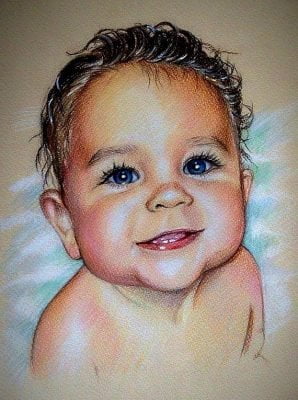
Colored Pencils are pencils that have a core of colored pigment and a protective casing made of wood.
While standard pencils have a core of graphite and clay, the core of most of the colored pencils is made of wax, pigments, additives, and binding agents. Other colored pencils oil-based, water-soluble and some are even mechanical.
An Early History of colored pencils is not too well documented. It is known that Ancient Greeks used wax-based crayons and Pliny the Elder recorded that Romans also used colored crayons based on wax.
The first colored pencils appeared in the 19th century and were used for “checking and marking”. Staedtler, a German company owned by Johann Sebastian Staedtler invented colored oil pastel pencil in 1834. Production of colored pencils for art purposes started in the early 20th century. First art color pencils were invented and produced in 1924 by Faber-Castell and Caran d’Ache.
Berol started making its color pencils in 1938. Other manufacturers that also made color pencils during the late 30s and early 40s were Derwent, Progresso, Lyra Rembrandt, and Blick Studio. Few manufacturers claim that they invented the first (art) watercolor pencil.
There are different types of colored pencils depending on their intended use. Artist-grade pencils have higher concentrations of high-quality pigments than student-grade colored pencils. They also have measured and defined characteristics like “lightfastness” ( the ability of a pigment to retain its original color appearance under exposure to light i.e. resistance to UV rays in sunlight), core durability, break, and resistance to water.
9. Collage Painting:
Collage is a form of artwork that is made by assembling different pieces to create a new, finished work of art. Collages can be made from a variety of materials such as paper and fabric.
There are so many different styles of collage. Some collagists create abstract artwork while others make artwork that tells a story with people in different settings.
There are also lots of different collage techniques.
A technique is a way an artist puts together a work of art.
This includes the materials used, the way they were glued together, and the way the pieces were cut.
10. Ink Painting:
Ink painting originated in East Asia as the tradition of using carbon-based black ink and calligraphic brush painting techniques and has continued to evolve as the basis for many contemporary works in the region.
Ink is as synonymous with painting in the East as oil is with painting in the West.
From traditional and historical, to contemporary, to avant-garde, these eight galleries offer us an opportunity to appreciate the rich spectrum of ink painting styles.
11. Ball Point Pen Art:
Universal and affordable – the ballpoint pen has become the first choice for some artists, who are looking for unconventional art medium.
Professional and amateur artists found this typical writing tool as an alternative art supply, which can be used to create the coolest artworks.
Drawing with a ballpoint pen allows artists to accurately create small details and sharp lines.
However, pens usually cannot be erased, so it requires extremely high precision and a lot of patience.
12. Sand Painting:
Sand painting styles, also called dry painting, type of art that exists in highly developed forms among the Navajo and Pueblo Indians of the American Southwest and in simpler forms among several Plains and California Indian tribes.
Although sand painting is an art form, it is valued among the Indians primarily for religious rather than aesthetic reasons.
Its main function is in connection with healing ceremonies.
13. Fresco:
Fresco painting, method of painting water-based pigments on freshly applied plaster, usually on wall surfaces.
The colors, which are made by grinding dry-powder pigments in pure water, dry and set with the plaster to become a permanent part of the wall.
Fresco painting is ideal for making murals because it lends itself to a monumental style, is durable, and has a matte surface.
14. Action Painting:
When you look at a painting, you expect to be able to identify things in it, like people, sunsets, or even beaches, right? If that’s the case, you are probably most familiar with representational painting, which is a kind of painting that depicts familiar objects to help you get an idea of what it’s about. But not all paintings rely on this for their subject matter. Abstract painting mainly conveys its subject without the use of such identifiable objects and is more open to your own interpretations.
Action painting, sometimes called Abstract Expressionism, evolved in the 1940s and 1950s during a time of unrest following World War II. There was much anxiety about the potential impact of the Cold War, and the possible spread of Communism worldwide.
The action painting movement reflected this turmoil of the time. It was also known as ”gestural painting,” because it involved the vigorous, sweeping application of paint to the canvas. This style was more about the physical act of painting and showing the emotion of the artist, rather than accurately depicting realistic scenes and recognizable forms.
When looking at an action painting, your eyes tend to constantly move back and forth across its surface as you take in the expressive and unconventional effects the artist has created.
15. Grisaille:
The art of executing an illustration entirely in shades of gray or to create the illusion of sculpture, this painting technique is used.
In the 15th century, it was used by the Flemish painters.
In the 18th century, to imitate classical sculpture in wall and ceiling decoration, grisaille was used.
Among most of the painters, grisaille was used in the art of coloring glass for stained glass.
16. Spray painting:
Spray painting is a painting technique in which a device sprays coating material (paint, ink, varnish, etc.) through the air onto a surface. The most common types employ compressed gas—usually air—to atomize and direct the paint particles.
Spray guns evolved from airbrushes, and the two are usually distinguished by their size and the size of the spray pattern they produce. Airbrushes are hand-held and used instead of a brush for detailed work such as photo retouching, painting nails, or fine art.
Air gun spraying uses generally larger equipment. It is typically used for covering large surfaces with an even coating of liquid.
Spray guns can be either automated or hand-held and have interchangeable heads to allow for different spray patterns.
Single color aerosol paint cans are portable and easy to store.
17. Tempera Painting:
Tempera painting styles, a painting executed with pigment ground in a water-miscible medium.
The word tempera originally came from the verb temper, “to bring to the desired consistency.” Dry pigments are made usable by “tempering” them with a binding and adhesive vehicle. Such painting was distinguished from fresco painting, the colors for which contained no binder.
Eventually, after the rise of oil painting, the word gained its present meaning.
18. Encaustic Painting:
Encaustic painting technique is well known for hot wax painting in which generally beeswax is heated with color pigments.
The simplest encaustic mixture can be made by adding colored pigments to beeswax.
The liquid mixture is then spread over upon the surface of wood or other materials.
This type of painting is quite different and requires lots of efforts.
This technique was used in the Fayum Mummy Portraits from Egypt around 100-300 AD, in the Blachernitissa and other early icons, as well as in many works of 20th century.
19. Miniature Painting:
At a distance, they are beautiful. On closer examination, they are phenomenal, unraveling stories captured with infinitesimal, intricate details.
The world of Miniature Paintings syles is a kaleidoscope of history, scriptures, and the lives of people through the ages.
Defined by delicate brushwork, a mélange of colors, and graceful forms, miniature paintings are so delicate, that even today, with so much modernization, squirrel hair is used to create the brushes used in this art form.
Each painting abounds with fine photographic details, capturing even the hair of a character.
20. Panel Painting:
This painting technique was executed on a rigid support-ordinarily wood or metal-as distinct from the painting done on canvas.
The panel was the support for easel painting before canvas came into general use at the end of the 16th century.
Beech, cedar, chestnut, firs, larch, linden, white poplar, mahogany, olive, dark walnut, and teak are the type of wood which has been used while panel painting.
To remove gum and resin, wood panels were usually boiled or steamed and then wood panels were coated with a glutinous material and gesso to fill the pores on which the painting was executed.
Silver, tin, lead, and zinc were also used for the panel paintings.
21. Digital Painting:
Digital art is a form of art that uses digital technology. Wikipedia defines a digital artist as someone who “makes use of digital technologies in the production of art.” What this means is, the artwork is computerized, it is immaterial. It only exists as a series of binary digits in a computer until you have it printed.
Digital art has evolved a lot in the last decade or so with the constant development of graphics software and hardware. Companies – such as Adobe, for instance, leaders in the world of digital art – keep improving their software to provide artists with the means to create their vision using new technologies.
Digital painting does not provide physical texture or volume as the painting is created on a screen, but it can simulate it through filters and effects.
For someone who has only used traditional methods before, digital painting can be a completely new creative experience. You can simulate the effect of a traditional artwork or create something totally different, such as fractal art for instance.
22. Panorama:
Panoramic paintings styles are massive artworks that reveal a wide, all-encompassing view of a particular subject, often a landscape, military battle, or historical event. They became especially popular in the 19th century in Europe and the United States, inciting opposition from some writers of Romantic poetry. A few have survived into the 21st century and are on public display.
The panoramas were in the following form: the viewer was invited to enter the rotunda through a tunnel plunged into darkness. He then debouched in the middle of a circular painting of which he could neither see the top, hidden by a screen, nor the bottom, because of a railing that kept him at a distance from the painting. The light source was likewise masked by the screen.
The canvas, about 7 meters high and covering circular walls 17 to 50 meters in diameter, was exhibited most often during exhibitions and circulated from one city to another, or even from one country to another.
23. Phad Painting:
India has a rich and vibrant cultural heritage. The important part is that we the people of India have still kept that culture alive. We still can witness our ancient cultural influences in our modern routine. We treasure our heritage with pride. Paintings are also a big part of our culture.
There are myriad painting styles that find their roots in India and have stories attached to them. One such painting style is Phad painting. Phad is an indigenous painting style of the state of Rajasthan, India, that depicts the narratives of the folk deities of the state.
This style of painting is a blend of Rajput and Mughal styles of painting. Originated thousands of years ago, this fabled heritage of Bhilwara is done on a long piece of canvas called Phad. Mostly, the stories of the folk deity Pabuji and the Gurjar Warrior, Devnarayanji are depicted on Pads.
In ancient times, the storytellers would travel from village to village and narrate the stories using Phads as their pictorial depiction tool. Singing and dancing made an integral part of storytelling.
The priest singers and dancers of Rajasthan known as Bhopas and Bhopis would carry the painted Phad scrolls along to use them as a part of their elaborate song and dance performances to narrate the lores of the folk deities who are worshiped in that region. The Bhopa had a musical instrument known as Ravanahatha.
Accompanying him was his wife Bhopi who would sing and dance on the tune along with reciting the poetry and narrate the stories of the glory of folk deities. This whole would turn out to be an entertaining event for the village residents that would go on overnight. We can still witness this in some villages of
24. Anamorphis:
Anamorphis is a from artwork, an innovative perspective technique which gives a distorted picture of the subject when portrayed in a picture.
If it’s seen from a particular angle or in a curved mirror, the distortion disappears and the artwork in the picture appears normal.
It is originated from the Greek word meaning “to transform”.
The term anamorphis was first used in the 17th century.
25. Easel Painting:
Easel painting styles of art where the execution is based on portable support such as a panel or a canvas.
The easel paintings were known to the ancient Egyptians and the 1st century – AD Roman Scholar.
It became relatively common and finally overriding the mural or wall painting.
26. Gouache Painting:
Gouache and watercolor are made of the same basic materials but differ in specific, important ways.
Watercolors contain pigments that have very small particle sizes so that the paint can be spread thinly enough to be near-transparent. Gouache, on the other hand, has larger particles and more body, so it looks heavier, denser, and more opaque after it dries.
The paint is best used to create a flat wash of color that dries matte. Because it dries so quickly, gouache is ideal for gestural, action, and direct paintings.
Gouache, like watercolor, can be re-wetted and binds to the paper that it’s on, but unlike watercolor, gouache paints cannot be watered down to look more translucent. Artists can’t use gouache to build layers of color as they can with watercolor.
27. Kalamkari Painting:
Kalamkari is an ancient style of hand painting done on cotton or silk fabric with a tamarind pen, using natural dyes.
The word Kalamkari is derived from a Persian word where ‘kalam‘ means pen and ‘Kari‘ refers to craftsmanship. This art involves 23 tedious steps of dyeing, bleaching, hand painting, block-printing, starching, cleaning, and more.
Motifs drawn in Kalamkari spans from flowers, peacocks, paisleys to divine characters of Hindu epics like Mahabharata and Ramayana. Nowadays, this art is primarily done to create Kalamkari sarees.
28. Perspective Painting:
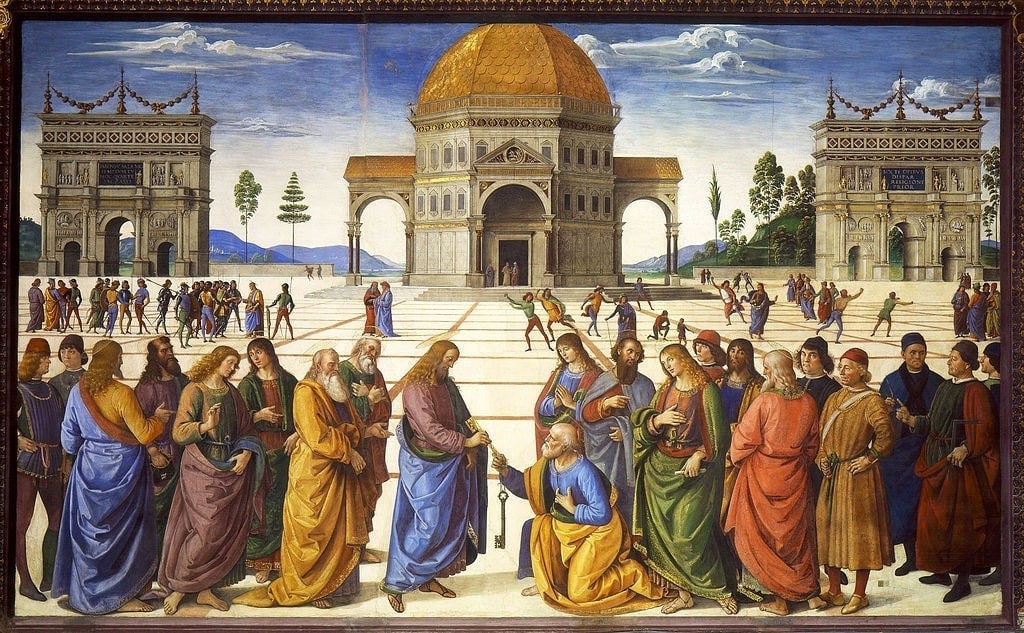
Perceptual methods of representing space and volume, which render them as seen at a particular time and from a fixed position and are characteristic of Chinese and most Western painting since the Renaissance, are in contrast to conceptual methods.
Pictures drawn by young children and primitives (untrained artists), many paintings of cultures such as ancient Egypt and Crete, India, Islam, and pre-Renaissance Europe, as well as the paintings of many modern artists, depict objects and surroundings independently of one another—as they are known to be, rather than as they are seen to be—and from the directions that best present their most characteristic features.
Many Egyptian and Cretan paintings and drawings, for example, show the head and legs of a figure in profile, while the eye and torso are shown frontally (see ). This system produces not the illusion of depth but the sense that objects and their surroundings have been compressed within a shallow space behind the picture plane.
29. Chiaroscuro:
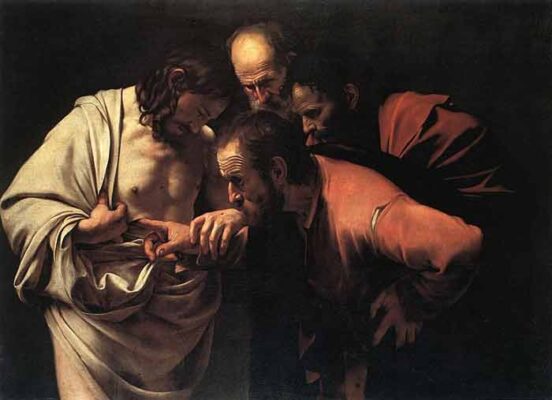
Chiaroscuro refers to the use of light and dark to create the illusion of three-dimensional volume on a flat surface. The term translates to “light-dark”; chiaro meaning bright or clear and scuro meaning dark or obscure.
The term is also used in a more narrow sense to describe artworks that display an extreme contrast between light and dark.
Chiaroscuro can be traced back to the work of Apollodorus Skiagraphos, a Greek painter who used hatched shadows to suggest volume. None of Skiagraphos’ works survived, but examples of his skiagraphia or “shadow-painting” technique can be seen in other Hellenistic artworks such as the “Stag Hunt,” a 4th century BCE carpet mosaic from a wealthy Macedonian home.
30. Madhu Bani Painting:
Madhubani painting styles, also referred to as Mithila Art (as it flourishes in the Mithila region of Bihar), is characterized by line drawings filled in by bright colors and contrasts or patterns. This style of painting has been traditionally done by the women of the region, though today men are also involved to meet the demand.
These paintings are popular because of their tribal motifs and use of bright earthy colors. These paintings are done with mineral pigments prepared by the artists. The work is done on freshly plastered or a mud wall.
Figures from nature & mythology are adapted to suit their style. The themes & designs widely painted are of Hindu deities such as Krishna, Rama, Siva, Durga, Lakshmi, Saraswati, Sun and Moon, Tulasi plant, court scenes, wedding scenes, social happenings, etc. Floral, animal, and bird motifs, geometrical designs are used to fill up all the gaps. The skill is handed down the generations, and hence the traditional designs and patterns are widely maintained.
In order to create a source of non-agricultural income, the All India Handicrafts Board and the Government of India have been encouraging the women artists to produce their traditional paintings on handmade paper for commercial sale. Madhubani painting has become a primary source of income for scores of families.
The continuing market in this art throughout the world is a tribute to the resourcefulness of the women of Mithila who have successfully transferred their techniques of bhitti chitra or wall painting to the medium of paper.
31. Warli Painting:
Warli paintings techniques are believed to be one of the oldest forms of art in history. It is a form of tribal art that owes its origin to the state of Maharashtra in India. This art is very popular among the tribal community, however, to date it has not gained any special recognition outside India.
Warli painting is a style of tribal art mostly created by the tribal people from the North Sahyadri Range in India. This range encompasses cities such as Dahanu, Talasari, Jawhar, Palghar, Mokhada, and Vikramgadh of Palghar district. This tribal art was originated in Maharashtra, where it is still practiced today.
32. Cave Painting:
Cave art, generally, the numerous paintings and engravings found in caves and shelters dating back to the Ice Age (Upper Paleolithic), roughly between 40,000 and 14,000 years ago
The first painted cave acknowledged as being Paleolithic, meaning from the Stone Age, was Altamira in Spain. The art discovered there was deemed by experts to be the work of modern humans (Homo sapiens). Most examples of cave art have been found in France and in Spain, but a few are also known in Portugal, England, Italy, Romania, Germany, Russia, and Indonesia. The total number of known decorated sites is about 400.
33. Gond Painting:
Gond painting styles is basically originated from Madhya Pradesh.
It’s a form of folk and tribal art that is practiced by the largest tribe in India.
The very striking facet of Gond paintings has to be the use of bright vivid colors such as white, red, blue and yellow.
The paints are usually derived naturally from objects such as charcoal, colored soil, plant sap, leaves, and even cow dung.
The colors were obtained from the various sand-like Yellow from Chui mitti which is a type of local sand, brown from Gheru mitti which is another type of sand.
Other colors were obtained from different sources like green from leaves and red from Hibiscus flower.
They used painting as a way to record their history.
34. Aerial Perspective:
Aerial perspective, also called atmospheric perspective, method of creating the illusion of depth, or recession, in a painting or drawing by modulating color to simulate changes effected by the atmosphere on the colors of things seen at a distance.
Although the use of aerial perspective has been known since antiquity, Leonardo da Vinci first used the term aerial perspective in his Treatise on Painting, in which he wrote: “Colours become weaker in proportion to their distance from the person who is looking at them.”
It was later discovered that the presence in the atmosphere of moisture and of tiny particles of dust and similar material causes a scattering of light as it passes through them, the degree of scattering being dependent on the wavelength, which corresponds to the color, of the light.
Because the light of short-wavelength—blue light—is scattered most, the colors of all distant dark objects tend toward blue; for example, distant mountains have a bluish cast. Light of long-wavelength—red light—is scattered least; thus, distant bright objects appear redder because some of the blues is scattered and lost from the light by which they are seen.
35. Camaieu Painting:
Camaieu, plural camaieux, painting technique by which an image is executed either entirely in shades or tints of a single color or in several hues unnatural to the object, figure, or scene represented.
When a picture is monochromatically rendered in gray, it is called grisaille; when in yellow, cirage. Originating in the ancient world, camaieu was used in miniature painting to simulate cameos and in architectural decoration to simulate relief sculpture.
36. Casein Painting:
Casein paint, a painting executed with colors ground in a solution of casein, a phosphoprotein of milk precipitated by heating with an acid or by lactic acid in souring. In the form of homemade curd made from soured skim milk, it has been a traditional adhesive and binder for more than eight centuries.
Refined, pure, powdered casein, which can be dissolved with ammonia, has been used for easel and mural paintings since the latter 19th and early 20th centuries, and, more recently, ready-made casein paints in tubes have come into very wide use.
An advantage of casein painting is that it can create effects that approach those of oil painting. It permits the use of bristle brushes and a moderate impasto, like oil painting, but not the fusion of tones. It is preferred by some because of its speedy drying and matte effects.
When dry, the paint becomes water-resistant to a considerable degree. Casein paintings may be varnished to further resemble oil paintings, and they are frequently glazed or overpainted with oil colors. Because casein is too brittle for canvas, it must be applied to rigid boards or panels.
37. Divisionism:
The methodology of separating colors into individual dots or strokes of pigment.
It formed the basis for Neo-Impressionism.
When you see the painting from a distance, it would blend and can be perceived by the retina as a luminous whole.
Divisionism means the separation of color and pointillism means the skill of applying dots.
This is a unique painting styles.
38. Foreshortening:
Foreshortening is a technique used in perspective to create the illusion of an object receding strongly into the distance or background. The illusion is created by the object appearing shorter than it is in reality, making it seem compressed. It is an excellent way to maximize the depth and dimension of paintings and drawings.
Foreshortening applies to everything that is drawn in perspective. This includes buildings, landscapes, still life objects, and figures.
39. Graffiti:
Graffiti painting styles, a form of visual communication, usually illegal, involving the unauthorized marking of public space by an individual or group.
Although the common image of graffiti is a stylistic symbol or phrase spray-painted on a wall by a member of a street gang, some graffiti is not gang-related.
Graffiti can be understood as antisocial behavior performed in order to gain attention or as a form of thrill-seeking, but it also can be understood as an expressive art form.
40. Impasto:
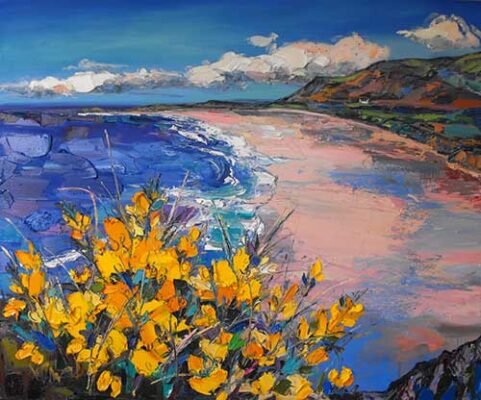
Traditionally, oil paint is the medium used for impasto painting due to its thick consistency and slow drying time. But acrylic can also be used if heavy body acrylic gels are added.
41. Mural Painting:
Mural, a painting applied to and made integral with the surface of a wall or ceiling. The term may properly include painting on fired tiles but ordinarily does not refer to mosaic decoration unless the mosaic forms part of the overall scheme of the painting.
Mural painting is inherently different from all other forms of pictorial art in that it is organically connected with architecture. The use of colour, design, and thematic treatment can radically alter the sensation of spatial proportions of the building.
This ends our list of 41 most famous painting styles and techniques of all times.
Hope to got to learn more about the enriched art world !!
For more such informative blogs please subscribe to our newsletters.
Looking for a Suprise and Memorizing Gift, then A Portrait Painting from your Favorite Photo is what you need !!!!!!

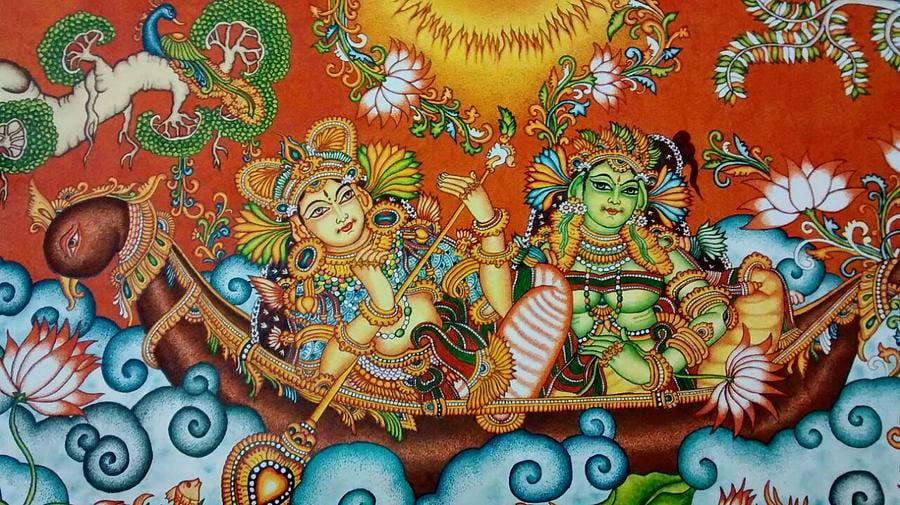
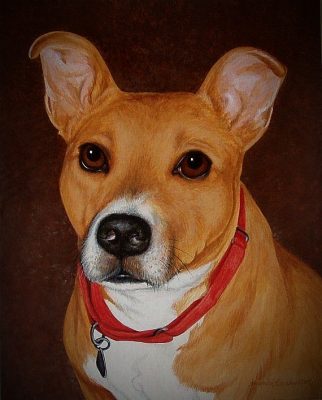
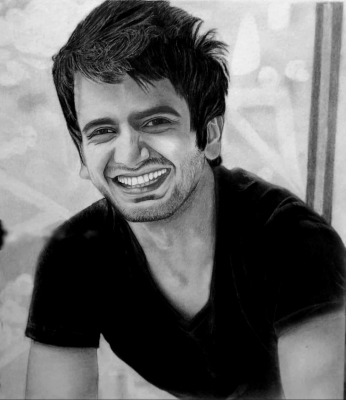
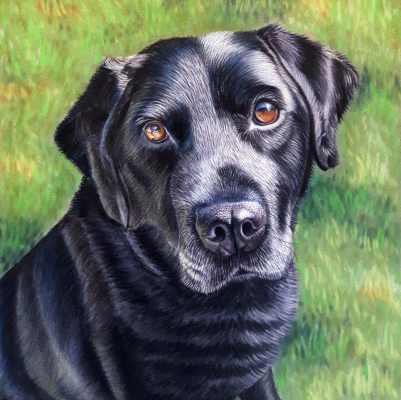
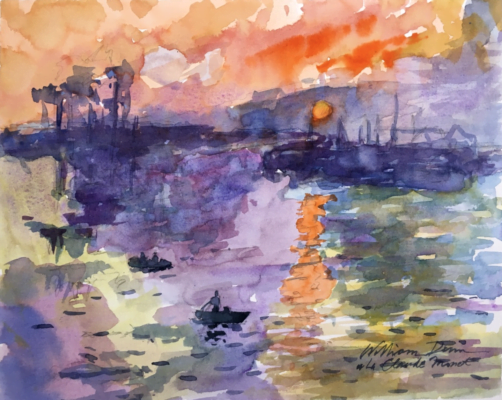
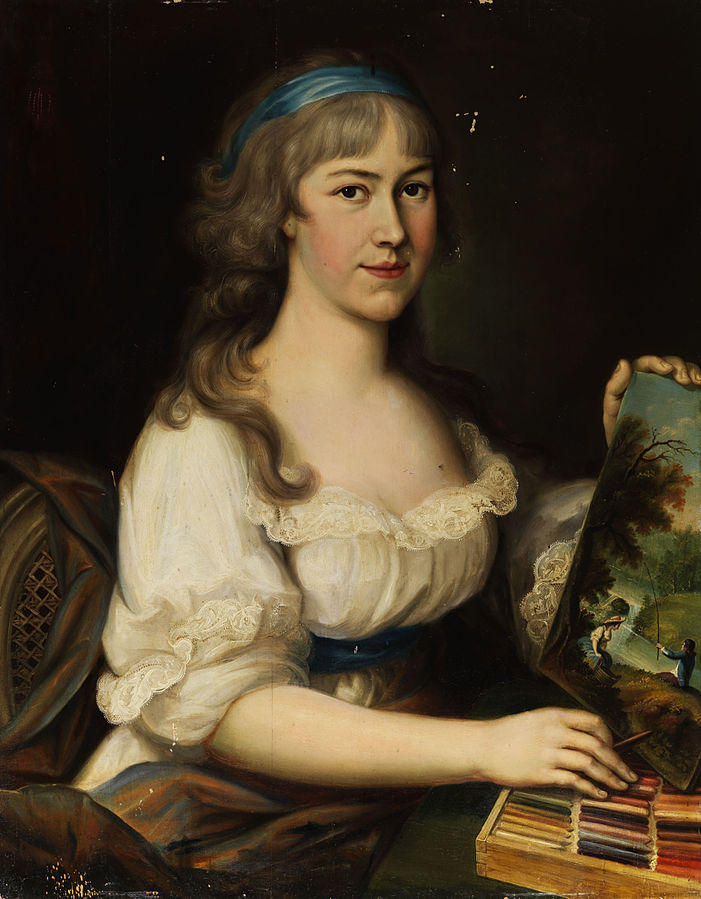
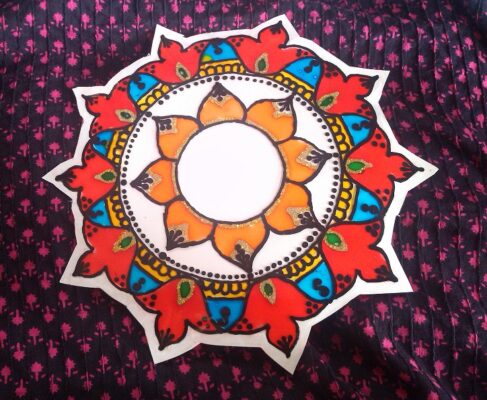
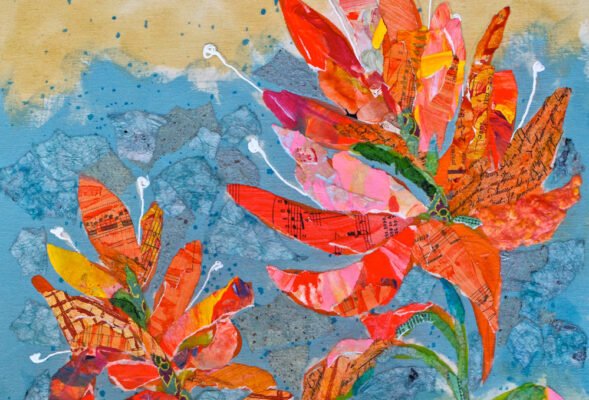
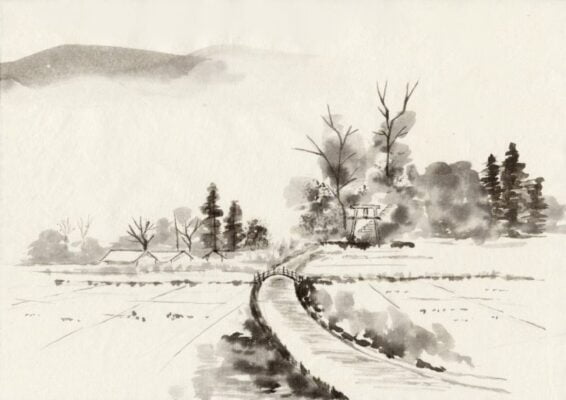
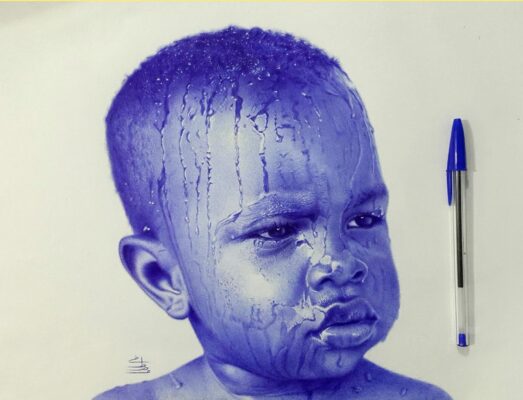
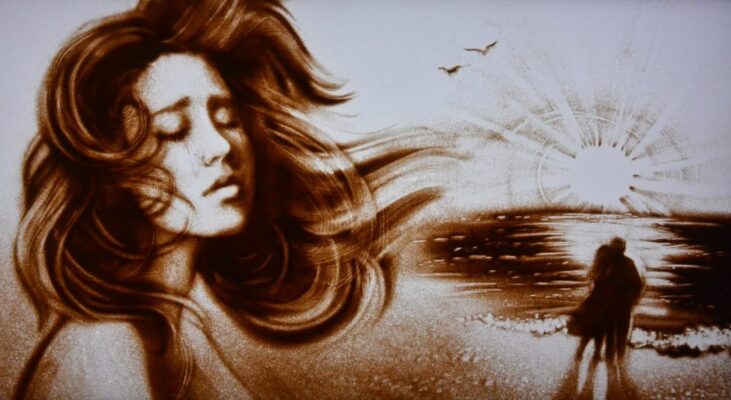
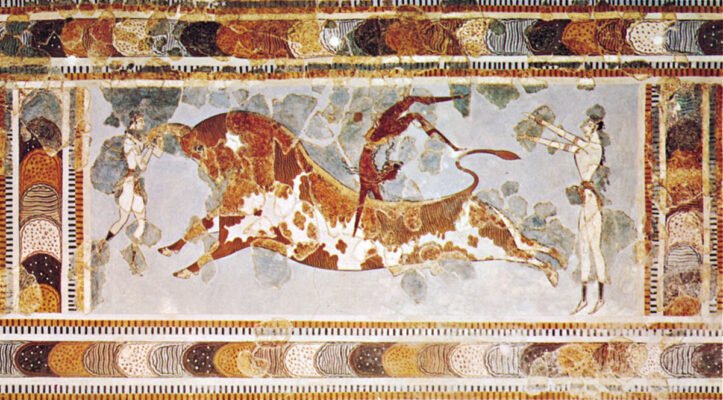
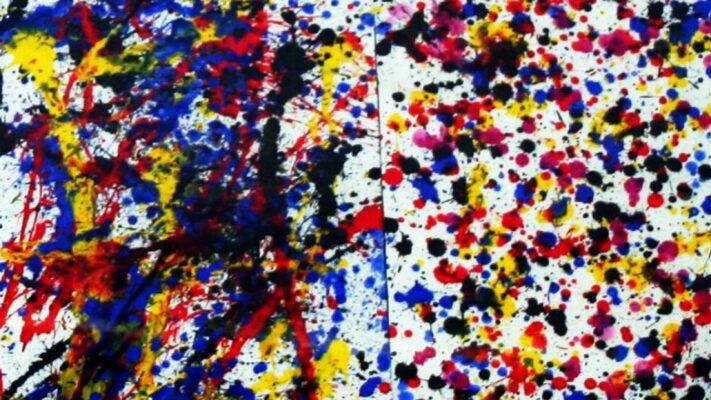
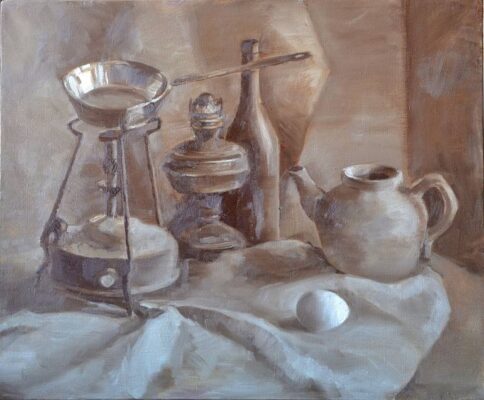
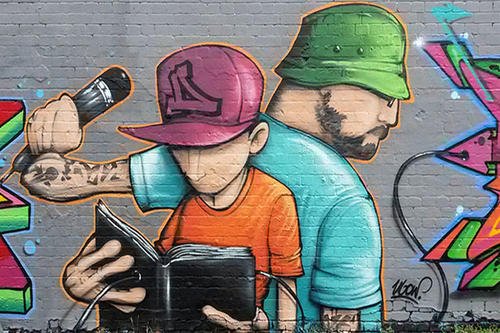
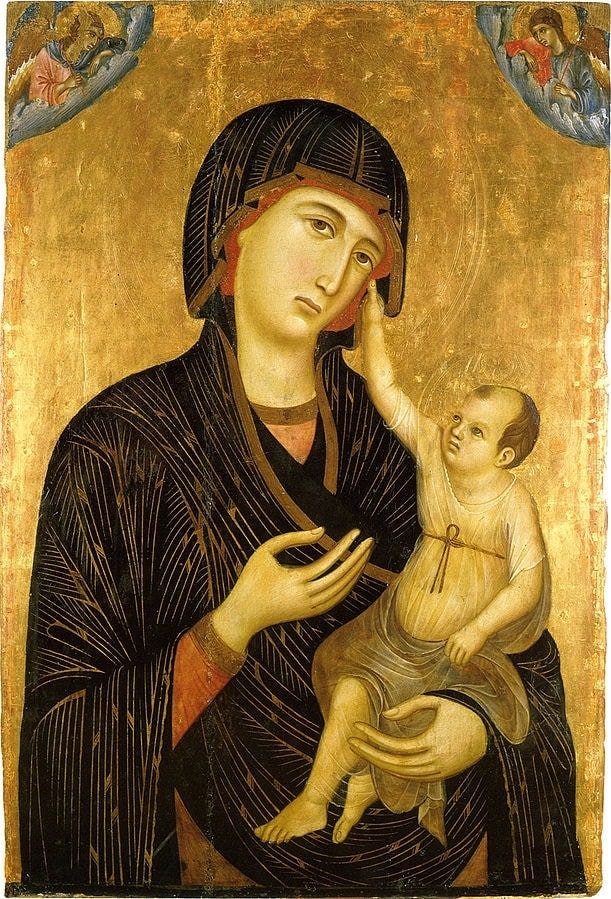

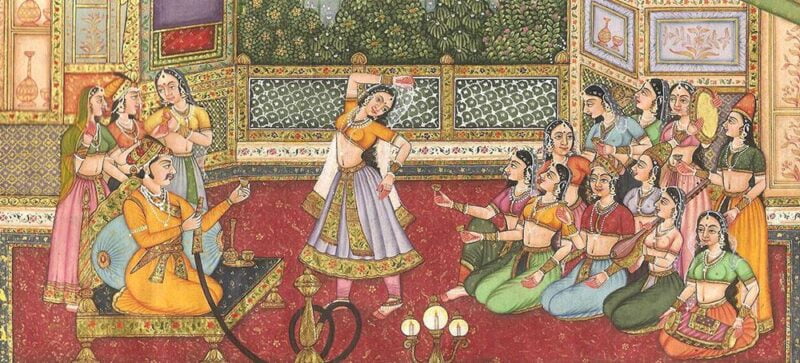
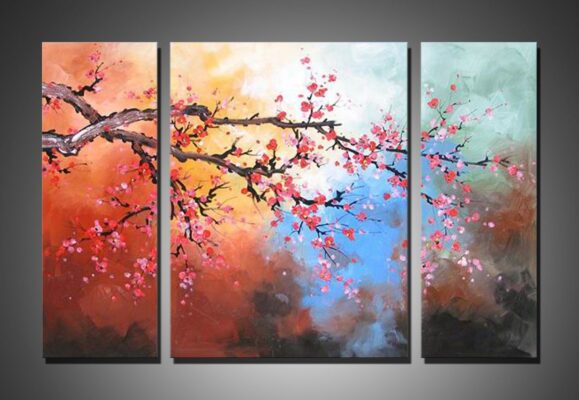
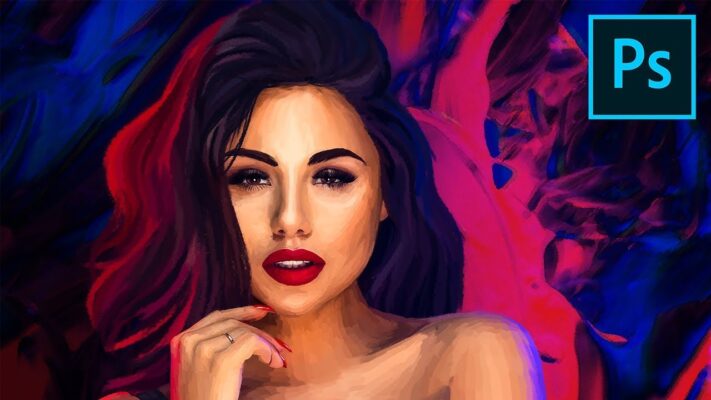

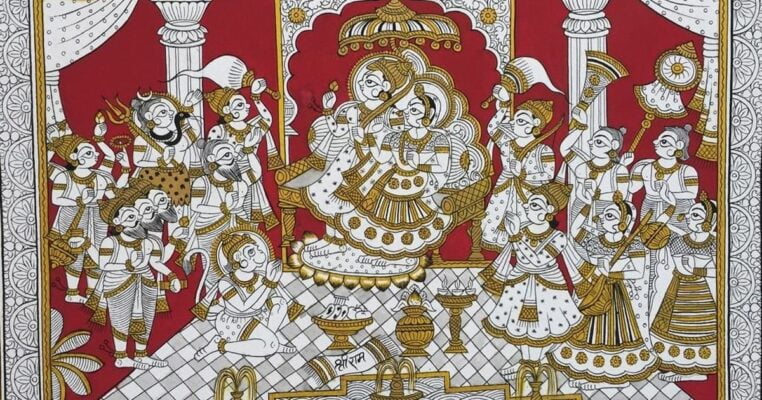
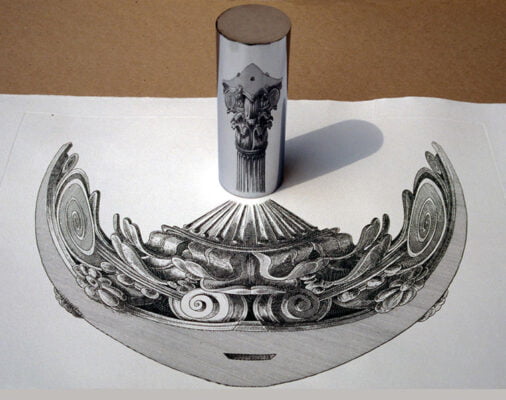

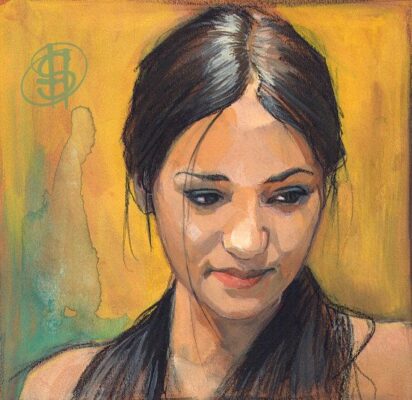
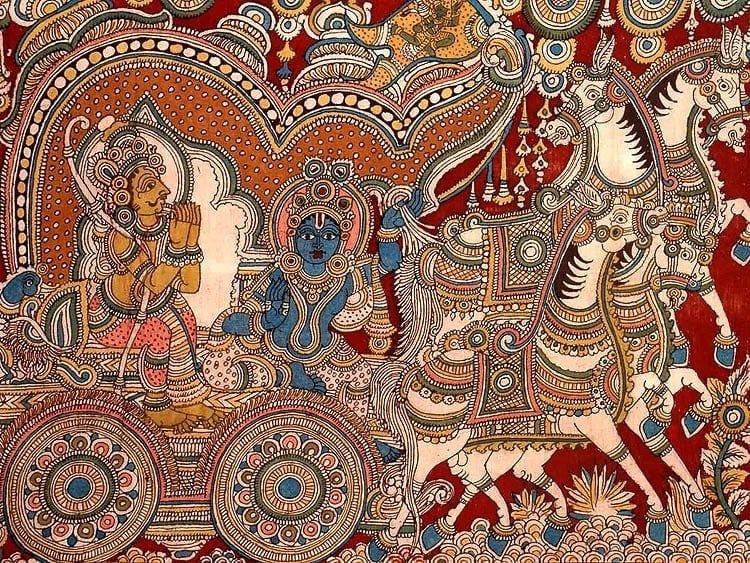
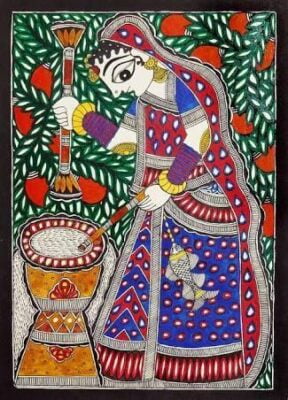
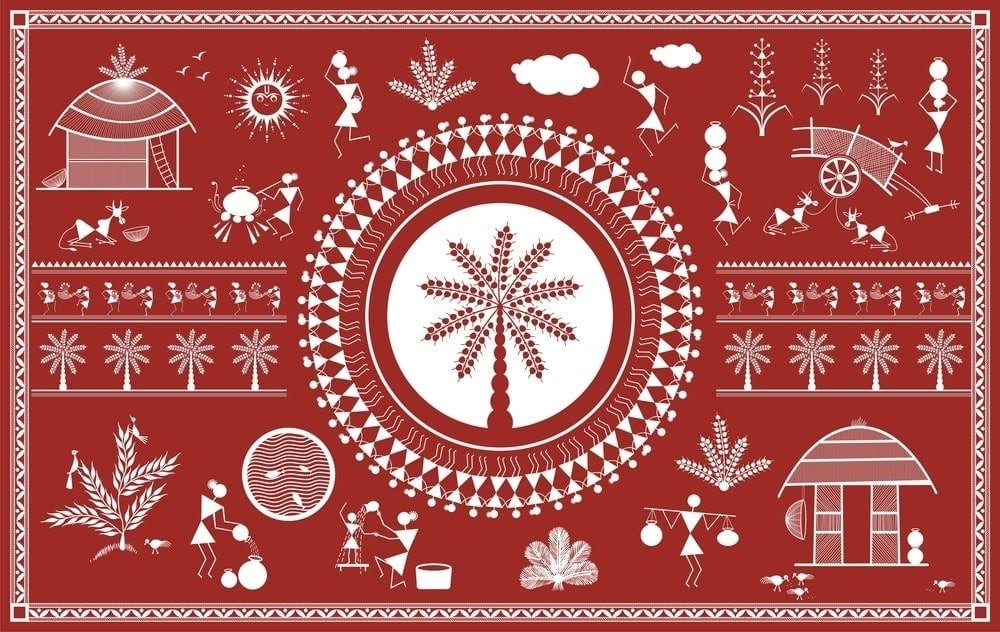
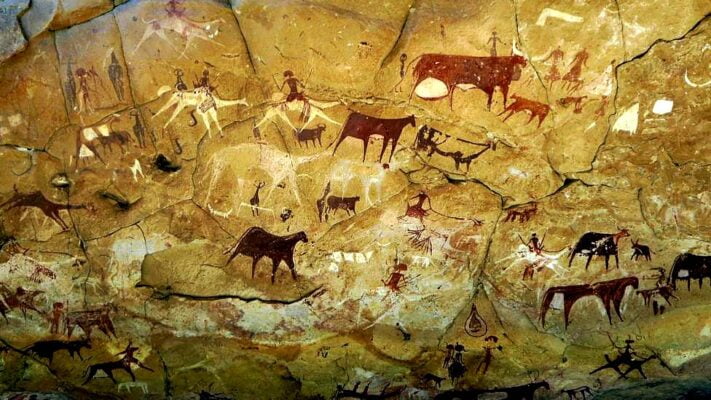
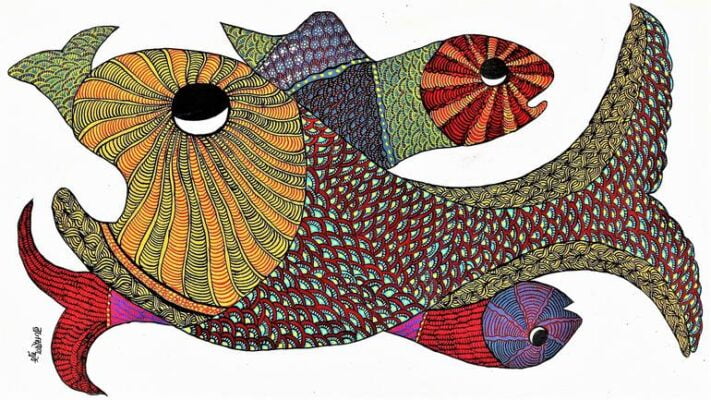
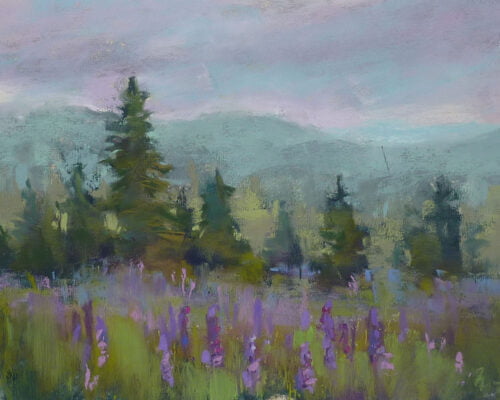

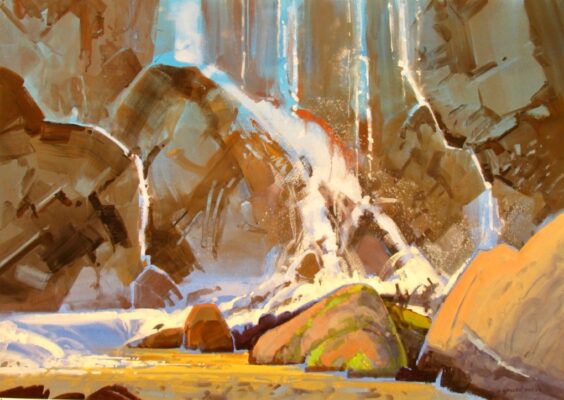
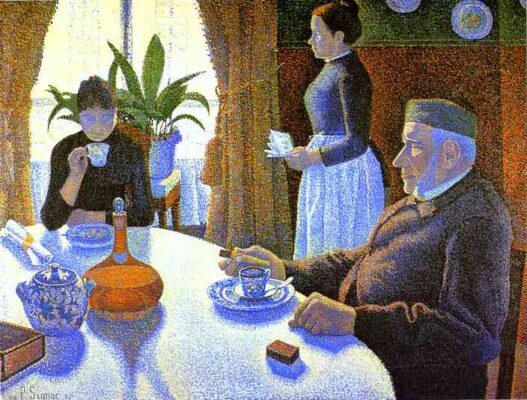
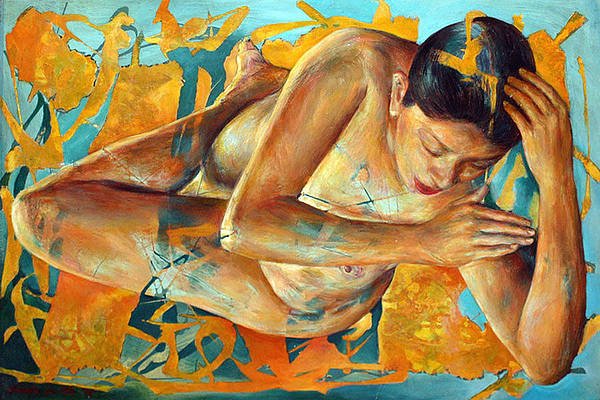

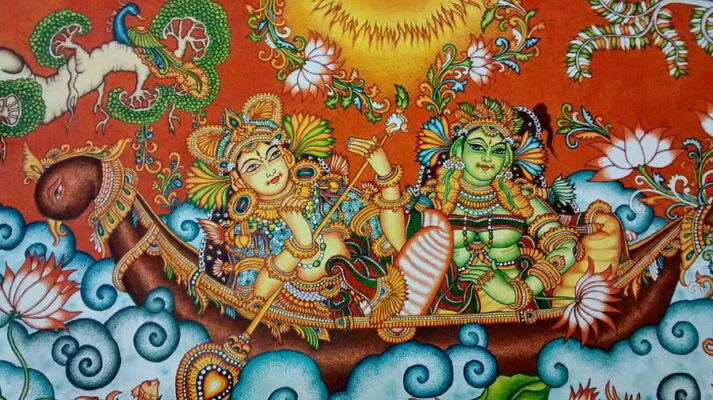
Sweet blog! I found it while searching on Yahoo News.
I’ve been trying for a while but I never seem to get there!
Thanks
Fine way of telling, and nice piece of writing to get
information regarding my presentation topic, which i am going to convey in academy.
Hey! Do you use Twitter? I’d like to follow you if that would be okay.
I’m undoubtedly enjoying your blog and look forward to
new updates.
Hi there, just became alert to your blog through Google, and found that it’s really informative.
I’m gonna watch out for Brussels. I’ll appreciate it if you continue this in the future.
Many people will be benefited from your writing. Cheers!
Great information. Lucky me I discovered your website by chance (stumbleupon).
I’ve book marked it for later!
It’s nearly impossible to find educated people
about this topic, but you seem like you know what
you’re talking about! Thanks
https://bit.ly/2H13dyX
Incredible! This blog looks just like my old one! It’s on a completely different subject but it has pretty much the same layout and design. Outstanding choice of colors!
Howdy very nice site!! Guy .. Excellent .. Wonderful ..
I will bookmark your web site and take the feeds additionally?
I am happy to find so many useful info right here within the put up, we’d like work out extra techniques in this regard, thank you for sharing.
. . . . .
I’m gone to tell my little brother, that he should also
pay a quick visit this webpage on regular basis to obtain updated from hottest information.
Not everyperson hire content writer in fixed salary, they
hire freelancer and outsource their work accordingly.
Recently, I was browsing Google for my keyword brings about see how
some of my articles wesre undertaking.
Hi my loved one! I want to say that this post is amazing,
nice written and come with almost all vital infos.
I’d like to look more posts like this .
fantastic put up, very informative. I ponder why the opposite specialists of this sector do not understand this.
You should proceed with your writing. I’m sure, you
have a huge readers’ base already!
Howdy! This blog post couldn’t be written much better!
Looking through this post reminds me of my previous roommate!
He continually kept talking about this. I most certainly will forward this article to him. Pretty sure he will have a good read. I
appreciate you for sharing!
Aw, this was an exceptionally nice post. Spending some time and actual effort to create a great article…
but what can I say… I put things off a whole
lot and don’t manage to get anything done.
Hi there, yup this paragraph is truly fastidious and I have learned lot of things from it regarding blogging.
thanks.
Wonderful blog! I found it while searching on Yahoo News.
Do you have any tips on how to get listed in Yahoo News?
I’ve been trying for a while but I never seem to get there!
Many thanks
Quality articles is the important to interest the visitors to pay a quick visit the web page, that’s what this web page is providing.
cheers a whole lot this website is usually proper as well as
casual
Excellent beat ! I wish to apprentice even as you amend your
site, how can i subscribe for a weblog web site?
The account helped me a appropriate deal. I have been tiny bit familiar of this your broadcast offered bright transparent idea
Every weekend i used to pay a visit this website, for the reason that i want enjoyment,
since this this site conations genuinely pleasant funny stuff too.
Peculiar article, just what I wanted to find.
Good post. I’m dealing with a few of these issues as well..
I think this is among the most vital information for me.
And i’m glad reading your article. But want to remark on few general things, The website style is
great, the articles is really great : D. Good job, cheers
We are a group of volunteers and starting a new scheme in our
community. Your site offered us with valuable info to
work on. You have done an impressive job and our entire community will be thankful to you.
Remarkable! Its really amazing piece of writing, I have got much clear idea regarding from this article.
Appreciating the hard work you put into your website and detailed information you offer.
It’s good to come across a blog every once in a while
that isn’t the same out of date rehashed information. Great read!
I’ve saved your site and I’m including your RSS feeds to my Google account.
I have been exploring for a little for any high quality articles or blog posts on this
sort of area . Exploring in Yahoo I eventually stumbled upon this site.
Studying this info So i am glad to show that I have an incredibly just right uncanny feeling I found out exactly what I needed.
I most surely will make sure to don?t put out of your mind this
website and provides it a glance regularly.
It’s genuinely very difficult in this active life to listen news on Television, therefore I simply
use the web for that purpose, and obtain the newest news.
I used to be recommended this web site by my cousin.
I’m no longer sure whether or not this put up is written by
means of him as nobody else recognise such designated about
my trouble. You’re incredible! Thank you!
I have been exploring for a bit for any high-quality articles or weblog posts in this kind of house .
Exploring in Yahoo I eventually stumbled upon this web site.
Reading this info So i’m glad to exhibit that I’ve
a very good uncanny feeling I came upon exactly what I needed.
I most indubitably will make certain to don?t overlook this web site and provides
it a look regularly.
Hi! I just wanted to ask if you ever have any trouble with hackers?
My last blog (wordpress) was hacked and I ended up losing
several weeks of hard work due to no data backup. Do you have any solutions to
protect against hackers?
Pretty component to content. I simply stumbled upon your web site and in accession capital to say that I get in fact loved account your blog posts.
Anyway I’ll be subscribing in your feeds and even I fulfillment
you get right of entry to persistently quickly.
Your means of explaining everything in this post is truly
good, every one be capable of effortlessly know it, Thanks a
lot.
It is the best time to make some plans for the future
and it is time to be happy. I’ve read this
post and if I could I wish to suggest you few interesting things or advice.
Maybe you can write next articles referring to this article.
I desire to read even more things about it!
If you are going for most excellent contents like I do,
only pay a visit this site all the time for the reason that it gives
quality contents, thanks
Keep on working, great job!
Hello there, just became aware of your blog through Google, and found that it is truly informative.
I am going to watch out for brussels. I will be
grateful if you continue this in future. Many people will be benefited from your
writing. Cheers!
What a stuff of un-ambiguity and preserveness of valuable familiarity on the topic of unpredicted feelings.
Awesome! Its really amazing piece of writing, I have got much clear
idea concerning from this piece of writing.
Hey there just wanted to give you a brief heads up and let you know a few of the images aren’t loading
properly. I’m not sure why but I think its a linking issue.
I’ve tried it in two different internet browsers and both show the same results.
It’s remarkable to visit this web site and reading the views of
all mates regarding this paragraph, while I am also keen of getting knowledge.
Exceptional post however , I was wondering if you could write a
litte more on this subject? I’d be very grateful if you could elaborate a
little bit further. Appreciate it!
Having read this I thought it was really enlightening.
I appreciate you finding the time and effort to put this
content together. I once again find myself personally spending way too much time both reading and leaving comments.
But so what, it was still worthwhile!
I am regular visitor, how are you everybody? This post posted at this web page is
really nice.
Excellent beat ! I wish to apprentice while you amend
your site, how could i subscribe for a blog website?
The account aided me a acceptable deal. I
had been a little bit acquainted of this your broadcast provided bright clear
idea
If some one needs to be updated with hottest technologies afterward he mustt be
go to see thgis site and be uup too date daily.
homepage
This is a topic which is close to my heart… Best wishes!
Where are your contact details though?
Awesome article.
I am truly glad to glance at this weblog posts which contains plenty of
helpful information, thanks for providing these information.
Yes! Finally something about car repair loan.
Your style is very unique in comparison to other folks I have read
stuff from. I appreciate you for posting when you have the
opportunity, Guess I will just bookmark this blog.
Greetings from Ohio! I’m bored to tears at work so I decided to
check out your site on my iphone during lunch
break. I love the knowledge you present here and can’t wait to
take a look when I get home. I’m shocked at how fast your
blog loaded on my cell phone .. I’m not even using WIFI, just 3G ..
Anyhow, wonderful site!
I appreciate, lead to I found just what I was looking for.
You’ve ended my 4 day lengthy hunt! God Bless you man. Have a great day.
Bye
homepage
I’ve been surfing online more than 3 hours today, yet I never found
any interesting article like yours. It’s pretty worth enough for me.
Personally, if all web owners and bloggers made good content as you did,
the web will be a lot more useful than ever before.
I’m extremely inspired along with your writing talents as smartly as
with the format to your weblog. Is that this a paid subject
or did you customize it yourself? Either way keep up the excellent
quality writing, it’s rare to look a great blog like this one today..
Thank you for the auspicious writeup. It in fact was a amusement account it.
Look advanced to far added agreeable from you! However, how can we communicate?
It’s in reality a great and useful piece of info.
I’m happy that you just shared this helpful info with us.
Please stay us up to date like this. Thanks for sharing.
Fantastic post however , I was wondering if you could write a litte more on this subject?
I’d be very grateful if you could elaborate a little bit further.
Many thanks!
I like the helpful info you provide in your articles.
I will bookmark your blog and check again here frequently.
I’m quite sure I’ll learn a lot of new stuff right here!
Good luck for the next!
We stumbled over here from a different web address and thought I may as well check things
out. I like what I see so i am just following you.
Look forward to going over your web page yet again.
After looking into a handful of the blog articles on your
site, I truly appreciate your way of blogging. I book-marked it to my bookmark website list and will be
checking back in the near future. Take a look at my web site as well and tell me your opinion.
Hello, constantly i used to check blog posts here in the early hours in the daylight,
as i enjoy to find out more and more.
I blog quite often and I seriously appreciate your
information. This article has really peaked my
interest. I am going to book mark your blog and keep checking for new details about once per week.
I subscribed to your Feed too.
After going over a few of the articles on your blog,
I truly appreciate your technique of blogging. I added
it to my bookmark website list and will be checking back in the near future.
Take a look at my website too and tell me your opinion.
Woah! I’m really digging the template/theme of this website.
It’s simple, yet effective. A lot of times it’s challenging to get that “perfect balance” between user
friendliness and visual appeal. I must say you’ve done
a fantastic job with this. In addition, the blog loads very quick for me on Safari.
Excellent Blog!
I really prize your work, Great post.
This post will assist the internet people for setting up new
blog or even a weblog from start to end.
Hi, I do believe this is an excellent web site.
I stumbledupon it 😉 I am going to return once again since I bookmarked it.
Money and freedom is the greatest way to change, may you be rich and continue
to help others.
Do you mind if I quote a few of your posts as long as I provide credit and sources back to your weblog?
My blog is in the exact same niche as yours and my visitors would
truly benefit from a lot of the information you provide here.
Please let me know if this okay with you. Appreciate it!
I’ve learn some just right stuff here. Definitely price bookmarking for revisiting.
I wonder how a lot effort you put to make the sort of great informative website.
I relish, cause I found exactly what I was having
a look for. You’ve ended my 4 day lengthy hunt! God Bless you man.
Have a nice day. Bye
It’s wonderful that you are getting ideas from this post as well as from our discussion made at this time.
Hi there! This post couldn’t be written any better!
Reading through this post reminds me of my previous roommate!
He continually kept preaching about this. I’ll forward
this article to him. Fairly certain he’ll have a good read.
Thank you for sharing!
I must thank you for the efforts you’ve put in writing this site.
I am hoping to see the same high-grade blog posts by you later on as well.
In truth, your creative writing abilities has motivated me to get my
own blog now 😉
I used to be able to find good info from your content.
Hello, I enjoy reading all of your post. I wanted to write a little comment to support
you.
Hello everyone, it’s my first pay a visit at this site, and post is genuinely fruitful for me, keep up posting such articles.
Amazing things here. I am very satisfied to see your post.
Thank you so much and I’m looking forward to touch
you. Will you please drop me a mail?
Wow! At last I got a web site from where I know how to really obtain useful facts regarding my study and knowledge.
my site; news
Hi Dear, are you in fact visiting this site daily, if so then you will definitely get fastidious knowledge.
An interesting discussion is definitely worth comment.
There’s no doubt that that you should write more about this issue, it might not be a taboo subject but usually folks don’t speak about these subjects.
To the next! Kind regards!!
The perfect man is often the grooms most trustworthy and faithful friend or relative.
The most effective man is often the grooms most reliable and faithful pal
or relative. The ushers often is the grooms brothers, cousin, or finest pals, or
brothers and close relations of the bride. Responsibilities of the best Man Before the marriage, he
– pays for his personal attire, purchased or rented.
May give the envelope to the officiant earlier than the ceremony.
In the course of the ceremony, he – is not a part
of the processional however enters with the groom, standing behind
the groom and slightly to the left. After the ceremony, he – instantly serves as one
of many witnesses in signing the wedding license. At the reception, he
– does not stand within the receiving line until he can also
be the father of the groom. After the reception, he – promptly returns
both his and the grooms rented formal wear to the appropriate location.
If you are going for finest contents like me, simply visit this web
site every day because it gives feature contents, thanks
Thanks designed for sharing such a nice thinking, post is pleasant,
thats why i have read it completely
I every time used to read paragraph in news papers but now as I am a user of internet
so from now I am using net for articles, thanks to web.
Have you ever considered about including a little bit more than just your articles?
I mean, what you say is valuable and all. Nevertheless think of if you added some great photos or video clips to give your posts more,
“pop”! Your content is excellent but with images and
video clips, this blog could definitely be one of the very best in its niche.
Very good blog!
Pingback: Top 10 Famous Painting of Top Painters of All Times. (Updated)
Pingback: How to get Commission work : Portrait Paintings | Just In Canvas